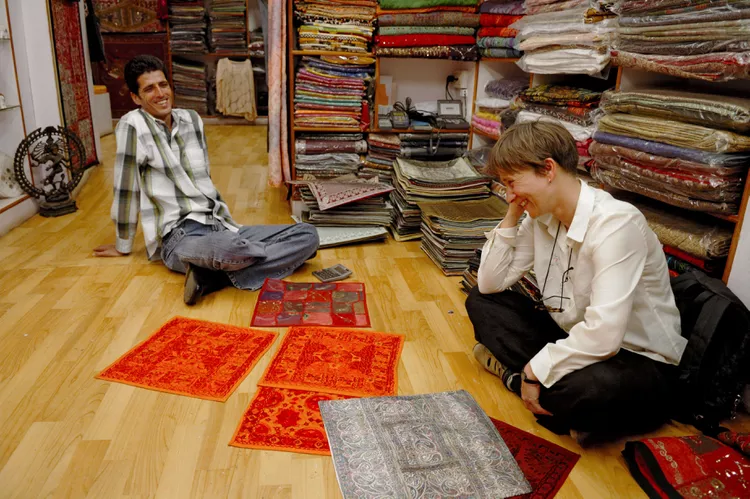How to Haggle and Get a Good Price
Shopping at markets in India can be a delightful experience. The dazzling array of handicrafts and textiles is hard to resist. However, it’s crucial not to pay the initial asking price. Bargaining, or haggling, is expected at markets where prices aren’t fixed. If you’re a foreigner who isn’t experienced in this, you may feel uneasy. Nevertheless, rest assured that vendors actually enjoy it; the interaction breaks the monotony of their day.
Keep in mind that vendors commonly have an “Indian price” and a “foreigner price.” Foreigners are perceived as having more financial resources in India, leading shopkeepers to set higher prices for them. This pricing strategy often works because many foreign patrons gladly pay such inflated prices. In comparison to the cost of similar goods in their home countries, the prices may not seem overly expensive. Consequently, this can inadvertently drive prices up for other foreigners, creating an expectation that they too will pay these escalated rates.
Tips for Haggling
Here’s the best way to approach haggling and bargaining at India’s vibrant markets, ensuring you don’t overspend:
- To gauge appropriate price levels, visit a few fixed-price stores first. Handicraft emporiums in major Indian cities can help you understand the market.
- If you find something appealing at a market, avoid purchasing it immediately from the first stall. Explore different vendors who may offer a better variety at lower prices.
- As a general guideline, aim to pay no more than half of the initial asking price for any item. Sometimes, especially when purchasing multiple items, you may pay even less.
- Shopkeepers consider the first sale of the day to be auspicious, so visiting early may result in a better deal.
- Stay discreet about your interest in an item. Always act indifferent regarding how much you desire it.
- Once the shopkeeper gives you a price, initiate the bargaining process by asking, “Is this your best price?” or “Is a discount possible?”
- Typically, the vendor will reduce the price slightly. Be firm and indicate that the item remains too expensive, prompting them to ask you what price you are willing to pay.
- When it’s your turn to propose a price, start with an amount significantly lower than your true budget—aim for about one-third of the quoted price.
- If the vendor doesn’t lower the price sufficiently, walking away often leads to a price drop. If they don’t budge, your initial offer might be too low; consider negotiating further or finding a better deal elsewhere.
- Avoid being overly petty by haggling for inconsequential amounts, as a few rupees are more valuable to a shopkeeper than to you.
- Once your price is accepted, consider the deal finalized. Refrain from continuing to haggle or saying you’ve changed your mind, as this can be seen as impolite.
- Finally, remember that bargaining should be a fun and enjoyable interaction. Engage with a smile, and using a few phrases in Hindi like “Yeh kitne ka hai?” (How much is this?) or “Bahut mahanga hai” (It’s very costly) may enhance your bargaining experience.
Where are the Best Markets in India?
Delhi is well-known for its diverse markets, offering a fantastic shopping experience.
Kolkata’s New Market is a historic bargain hunter’s paradise.
In Jaipur, Johari Bazaar in the Old City is particularly famous for its affordable jewelry.
Mumbai also boasts several interesting markets, including the famous Chor Bazaar, also known as the Thieves Market.
For travelers, understanding the visa requirements is essential to ensure a smooth trip. More information can usually be found on reliable travel advisory sites.





